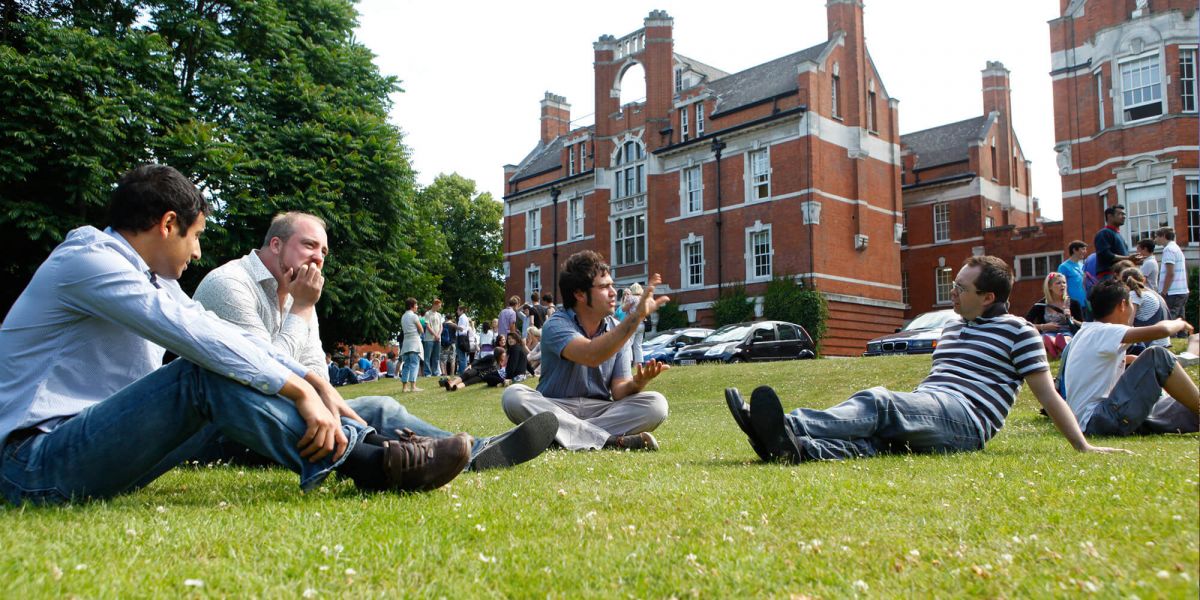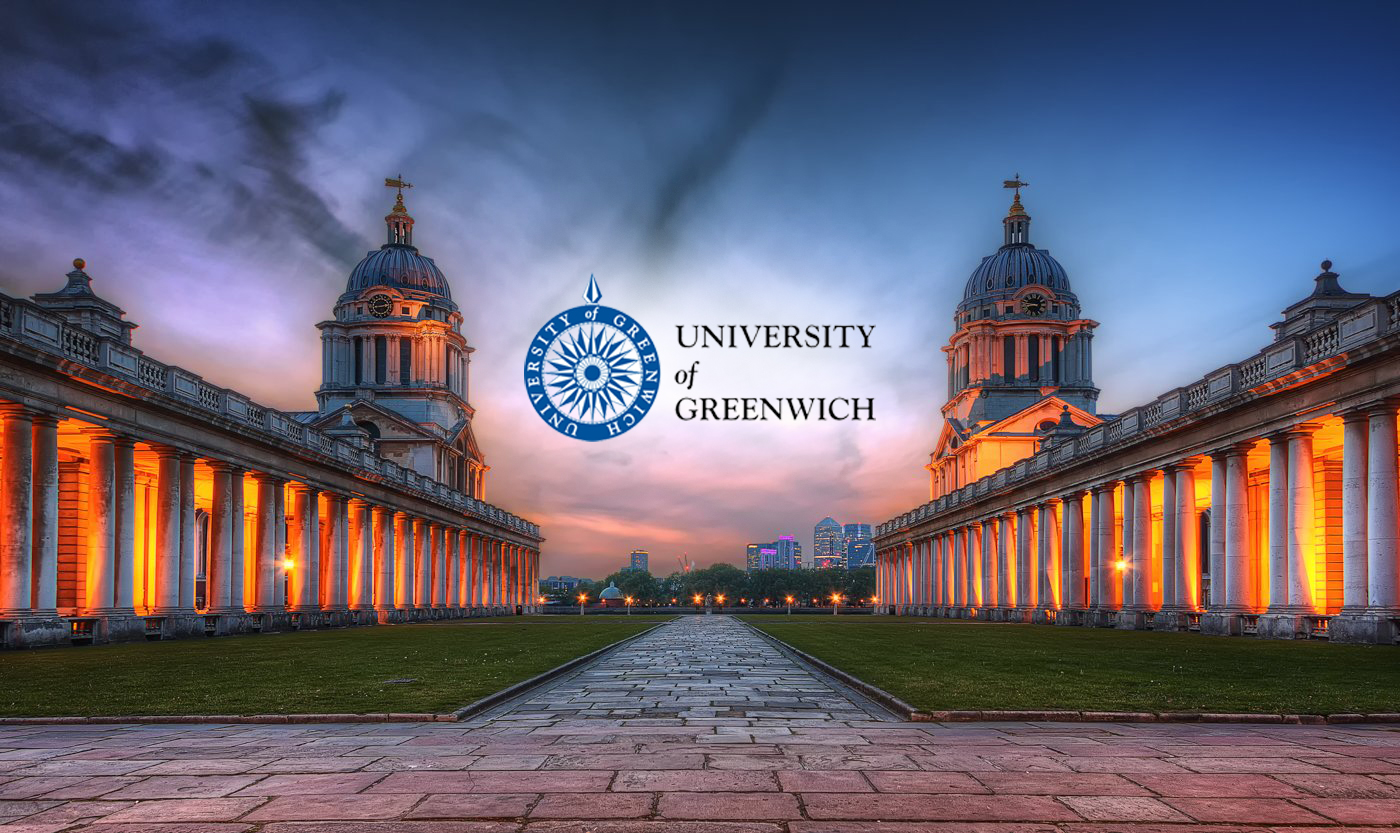
Ranked #117
UK
University of Greenwich
About University of Greenwich
The University of Greenwich is a public university located in London and Kent, United Kingdom. Previous names include Woolwich Polytechnic and Thames Polytechnic.[3]
The university's main campus is at the Old Royal Naval College, which along with its Avery Hill campus, is located in the Royal Borough of Greenwich. Greenwich also has a campus in Medway, Kent, as part of a shared campus.[4] The university's range of subjects includes architecture, business, computing, mathematics, education, engineering, humanities, maritime studies, natural sciences, pharmacy and social sciences.[5]
History
The university dates back to 1890, when Woolwich Polytechnic, the second-oldest polytechnic in the United Kingdom,[6] opened in Woolwich. It was founded by Frank Didden, supported by and following the principles of Quintin Hogg, and opened to students in October 1891. Like Hogg's pioneering venture in London's Regent Street, it initially combined education with social and religious functions.
In 1894 it focused on an educational role, concentrating on higher technical education appropriate to its location close to Woolwich Dockyard and the Royal Arsenal;[7] William Anderson, director-general of the Ordnance Factories, was a trustee and later a member of the board of governors.[8] Its premises were also used for day schools – the first Woolwich Polytechnic School was established in 1897.
In 1970, Woolwich Polytechnic merged with part of Hammersmith College of Art and Building to form Thames Polytechnic. In the following years, Dartford College (1976), Avery Hill College of Education (1985), Garnett College (1987) and parts of Goldsmiths College and the City of London College (1988) were incorporated.[9]
In 1992, Thames Polytechnic was granted university status by the Major government (together with various other polytechnics) and renamed the University of Greenwich in 1993. On 1 January 1993, the Thames College of Health Care Studies, itself a merger of three local nursing and midwifery training schools, officially merged with the newly designated University of Greenwich, becoming a full faculty of the university.[9]
Formerly a UK government research agency, the Natural Resources Institute (NRI) was incorporated into the university in 1996.[10]
In 2001, the university gave up its historic main campus in the Bathway Quarter in Woolwich, relocating to its current main campus in Greenwich.[11]
In 2018, the University of Greenwich started a partnership with Charlton Athletic F.C. [12]
In 2019, the university's main cafeteria was operated by BaxterStorey, which paid its workers £9.25 per hour without contractual sick pay. [13] After four strike days in October 2019, Greenwich University announced in early January 2020 that all outsourced cafe workers, cleaners and security guards would receive the London living wage of £10.55, in addition to the same sick pay and annual leave as university staff. [14]
In 2026 the university is due to merge with the University of Kent to form the London and Southeast University Group
Organisation
Academic disciplines at Greenwich are organised into four faculties which host a range of subject expertise within them:[16]
Faculty of Liberal Arts and Sciences
Business School
Faculty of Education, Health & Human Sciences
Faculty of Engineering and Science
The university also has a number of professional service directorates that support students and the faculties.
The university's main campus is at the Old Royal Naval College, which along with its Avery Hill campus, is located in the Royal Borough of Greenwich. Greenwich also has a campus in Medway, Kent, as part of a shared campus.[4] The university's range of subjects includes architecture, business, computing, mathematics, education, engineering, humanities, maritime studies, natural sciences, pharmacy and social sciences.[5]
History
The university dates back to 1890, when Woolwich Polytechnic, the second-oldest polytechnic in the United Kingdom,[6] opened in Woolwich. It was founded by Frank Didden, supported by and following the principles of Quintin Hogg, and opened to students in October 1891. Like Hogg's pioneering venture in London's Regent Street, it initially combined education with social and religious functions.
In 1894 it focused on an educational role, concentrating on higher technical education appropriate to its location close to Woolwich Dockyard and the Royal Arsenal;[7] William Anderson, director-general of the Ordnance Factories, was a trustee and later a member of the board of governors.[8] Its premises were also used for day schools – the first Woolwich Polytechnic School was established in 1897.
In 1970, Woolwich Polytechnic merged with part of Hammersmith College of Art and Building to form Thames Polytechnic. In the following years, Dartford College (1976), Avery Hill College of Education (1985), Garnett College (1987) and parts of Goldsmiths College and the City of London College (1988) were incorporated.[9]
In 1992, Thames Polytechnic was granted university status by the Major government (together with various other polytechnics) and renamed the University of Greenwich in 1993. On 1 January 1993, the Thames College of Health Care Studies, itself a merger of three local nursing and midwifery training schools, officially merged with the newly designated University of Greenwich, becoming a full faculty of the university.[9]
Formerly a UK government research agency, the Natural Resources Institute (NRI) was incorporated into the university in 1996.[10]
In 2001, the university gave up its historic main campus in the Bathway Quarter in Woolwich, relocating to its current main campus in Greenwich.[11]
In 2018, the University of Greenwich started a partnership with Charlton Athletic F.C. [12]
In 2019, the university's main cafeteria was operated by BaxterStorey, which paid its workers £9.25 per hour without contractual sick pay. [13] After four strike days in October 2019, Greenwich University announced in early January 2020 that all outsourced cafe workers, cleaners and security guards would receive the London living wage of £10.55, in addition to the same sick pay and annual leave as university staff. [14]
In 2026 the university is due to merge with the University of Kent to form the London and Southeast University Group
Organisation
Academic disciplines at Greenwich are organised into four faculties which host a range of subject expertise within them:[16]
Faculty of Liberal Arts and Sciences
Business School
Faculty of Education, Health & Human Sciences
Faculty of Engineering and Science
The university also has a number of professional service directorates that support students and the faculties.
Why Study at University of Greenwich?
@Top-Quality Education@ This university offers a high standard of teaching, led by expert faculty who are leaders in their fields, ensuring you gain deep knowledge and critical thinking skills to thrive in today’s competitive world.
@Global Recognition & Accreditation@ Degrees from this university are internationally recognized, opening doors to global career and academic opportunities, while ensuring a reputable and trusted education.
@Strong Career Outcomes@ With a focus on employability, the university provides excellent career support, internship programs, and strong industry links that help students secure jobs even before graduation.
@Innovative Learning Environment@ Modern classrooms, advanced laboratories, and access to digital tools create a dynamic, hands-on learning experience that prepares you for real-world challenges.
@Supportive Campus Life@ From academic support to student clubs and wellness services, the university offers a safe, inclusive, and vibrant campus where students can grow both personally and professionally.
